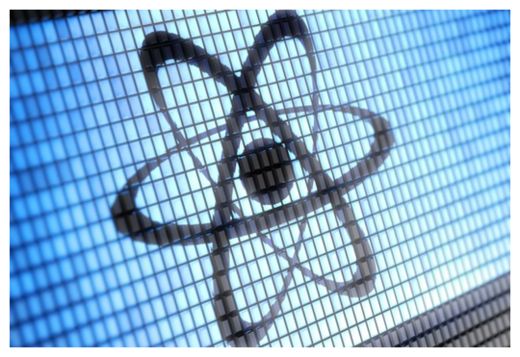
© Photos.com
As concerns over cyber security grow with each newly publicized attack, computer scientists have been pursuing quantum technology as a
silver bullet against would-be hackers.
According to a groundbreaking announcement, scientists at Los Alamos National Labs in New Mexico have been utilizing a small-scale "quantum internet" for the past two years.
Quantum cryptography is possible because of the phenomenon known as quantum entanglement. When two photons become 'entangled,' changing the spin of one of the photons will alter the spin of the other photon almost instantaneously.
These entangled photons can be used to create an encryption key that cannot be secretly deciphered, as the Heisenberg Uncertainty Principle dictates that simply trying to measure the characteristics of a photon will alter it.
For all its promise, computer scientists have only been able to use secure quantum communications with point-to-point communications. This means that messages can only be sent between two parties that each have one of the two entangled photons. Even this type of communication has only been demonstrated over relatively short distances of less than 70 miles.
"We're trying to come up with better scaled architecture for quantum networks," lead researcher Richard Hughes
explained to Forbes. "And by scaling I mean, in our approach, if you have many clients and one server."
"However, you don't have to actually send secure communications through the central server," he added. "Secure communications can go by any path you like. There are quantum links between each end client and the server, and the server manages the encryption keys."
The solution appears to be a server-based, cyber-middleman that has quantum links to each end user. The server would facilitate the sending of non-secret information to both sender and receiver - eliminating the need for a direct quantum connection.
"Let's say you want to send encrypted email to me," Hughes explained. "You and I are each doing quantum communications separately with server (
sic). So you tell the server you need a key to encrypt the message. The server knows both your quantum key and mine, and uses those keys to produce a secret key."
Hughes said this hybrid system would still allow for the detection of would-be hackers.
"Along with encrypting message, it also authenticates it," said Hughes. "If somebody tampered with message, the authentication value wouldn't match. So I could tell that someone was impersonating me or tampering with my messages in transit."
This system would also lighten the processing load on all parties involved since quantum communications move so fast and efficiently. Hughes added that the system currently in use at Los Alamos should be easy to scale up.
"We think with new silicon photonic chips, we can get per unit costs way down. We could construct networks using fabrication techniques that are amenable to mass production," Hughes said. "The next generation of devices that we want to build will be smaller and could even be built into tablets or smartphones."
He added that the Los Alamos team is currently working on expanding the range of their quantum system.
"Once you're at the 1,000 kilometer range," Hughes said. "You can have continental or even intercontinental quantum communications."

Read this article elsewhere in which the usual 'observation' issue was brought up as a red flag of notification for this 'tampering' or spying, though the operators of said system are in observational mode, so does then imply they will only see what they want to see? If one observes the observer, then how is such outside interference to be observed? Seems they are creating walls to shut out the world and like Zion, they is never a safe system for 'defense', as you'll never see 'it' coming.